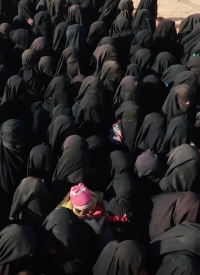policy
Networked: Techno-Democratic Statecraft for Australia and the Quad
Author(s): Martijn RasserDate of publication: 2021
Publication type: Policy
World leaders recognize that a strategic competition is underway and that the geopolitical context in which it will play out is morphing. Many of these leaders also understand that technology is at the core of this competition. Technology-leading countries will drive the digital economy, gaining...
The Domestic Security Grey Zone: Navigating the Space Between Foreign Influence and Foreign Interference
Author(s): Katherine ManstedDate of publication: 2021
Publication type: Policy
Australia has been a global first mover in updating its legislation, policy and bureaucratic structure to manage foreign influence risk in the 21st century. Australia’s response has focused on criminalising, disrupting and deterring the most pernicious form of foreign influence – foreign...
A 2020 Vision for Five Eyes: New Structures for New Challenges
Author(s): William A. StoltzDate of publication: 2020
Publication type: Policy
In the latest NSC Policy Options Paper, William A. Stoltz explores a 2020 vision for Five Eyes. Key points: Five Eyes has been a primarily operational grouping, but it is starting to broaden collaboration – particularly to address COVID-19 recovery. Five Eyes needs new planning structures if it...
The Strategic Implications of Manipulative Digital Platforms: A Trust-Driven Approach
Author(s): Dr. Zac RogersDate of publication: 2020
Publication type: Policy
Australia’s strategic environment is rapidly changing. The most measurable changes are shifts in the regional balance of power and intensifying competition for influence in the Indo-Pacific. These developments have been complicated and exacerbated by the uncertainty generated by the presidency of...
National Mobilisation During War: Past Insights, Future Possibilities
Author(s): Dr Peter LaytonDate of publication: 2020
Publication type: Policy
Publication download link Mobilisation occurs during all conflicts with just the degree of mobilisation varying. Surprisingly then, most mobilisation thinking, doctrine and processes focus almost entirely on pre-war mobilisation activities, aiming to ensure that a nation is adequately prepared for...
Navigating Uncertainty: The Future of Futures Analysis in the Australian Public Service
Author(s): Wilson, L, Young, R, Kapetas, ADate of publication: 2020
Publication type: Policy
Nations and governments today face complex structural challenges; the result of several decades of sweeping economic, technological and social change. The COVID-19 pandemic, and government responses worldwide, will likely ensure that the 2020s is a ‘decisional decade’. The critical choices we...
Diversifying Air Power: Broadening Air Force’s value proposition in an age of high contest
Author(s): Peter HunterDate of publication: 2020
Publication type: Policy
How should Air Force contribute to Australian Defence Force (ADF) strategy? In answering this question, it is important to start from first principles. By definition, Air Force remains responsible for the provision of air power capabilities to meet national defence requirements. Combat excellence...
China 2030: Power in a Disrupted World
Author(s): Young, R.Date of publication: 2020
Publication type: Policy
Our new series of Future Insights Papers are designed to help policymakers develop and test futures scenarios, conduct horizon scanning, and integrate futures analysis into their work. The Papers are designed to present provocative conversation-starters and arguable propositions, not definitive...
Activating People Power to Counter Foreign Interference and Coercion
Author(s): Katherine ManstedDate of publication: 2019
Publication type: Policy
Key points Citizens are increasingly frontline actors in Australia’s security challenges: as targets of malign interference and coercion, victims of collateral damage, and agents of national resilience. Advances in information and communications technologies have made Australian society...
The citizen as enemy combatant: dealing with foreign terrorist fighters
Author(s): Carroll, J.Date of publication: 2019
Publication type: Policy
Key points Foreign terrorist fighters are a complex problem: traitor, invader, child soldier, war criminal, ‘jihad by family’. Some are both perpetrators and victims of terrorism. Prosecution is problematic because it’s hard to get evidence, and foreign fighters aren’t returning. If brought home...
Pages































